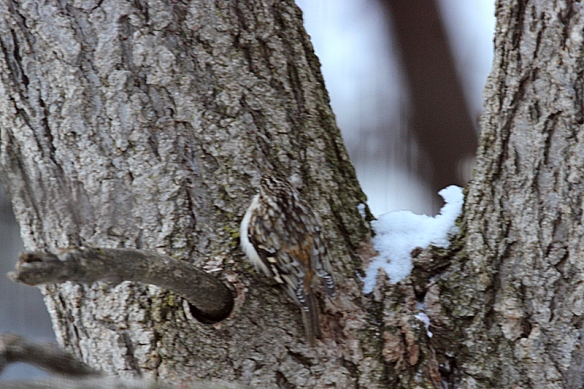A continuation of the discussion in the last post of why black accent or coloration is so widespread, especially in small birds…there are still more questions to answer.
For example, you would think that a boldly striped, black and white animal would be an easy target to spot against the homogeneous green or gold African savanna.
Disruptive patterns of black and white break up the outline of an animal’s body, making it difficult to detect them in a complex background. Maybe this is why a herd of zebra can be referred to as a “dazzle”?
Looking at a single chickadee against a plain white or tan or gray background makes them standout because of their bold black and white markings.
But finding them in their more typical, complex background of myriad tree branchlets and leaves is much more difficult.

How many chickadees hiding in the bushes? They blend in well with highlights of snow on branches or in the background, deep shade on unlit branches, and the tan of leaves and bark.
Birds that live in complex environments like the dappled shade of a forest, or the complex vegetation of a wetland or grassland, often have complex feather patterns (especially dark and light) that more or less blend with their background, or at the least, make them difficult to detect until they move. Some of the boldest black and white patterns, like the stripes on a Kildeer’s breast, actually distract one’s eye from the outline of the bird’s body.

Until she moves, mama Kildeer isn’t obvious in this marshy wetland. I didn’t even notice her chick standing silently on her right until I was editing the photo for a blog post.
Some birds emphasize camouflage even more by combining spots of white or bands of dark and light on their feathers.

Stripes down its breast and spots on the wings and back of the Barred Owl help break up the solid outline of its body.

The blotchy brown and white plumage of Brown Creepers lets them hide in plain sight on the rough bark of mature trees where they forage in crevices for prey.
So, one of the answers to why so many birds, especially those residents that live in the northern temperate forests all year, adopt splotchy patterns of black or brown and white plumage is that they maximize their ability to hide in plain sight by being boldly invisible.
















